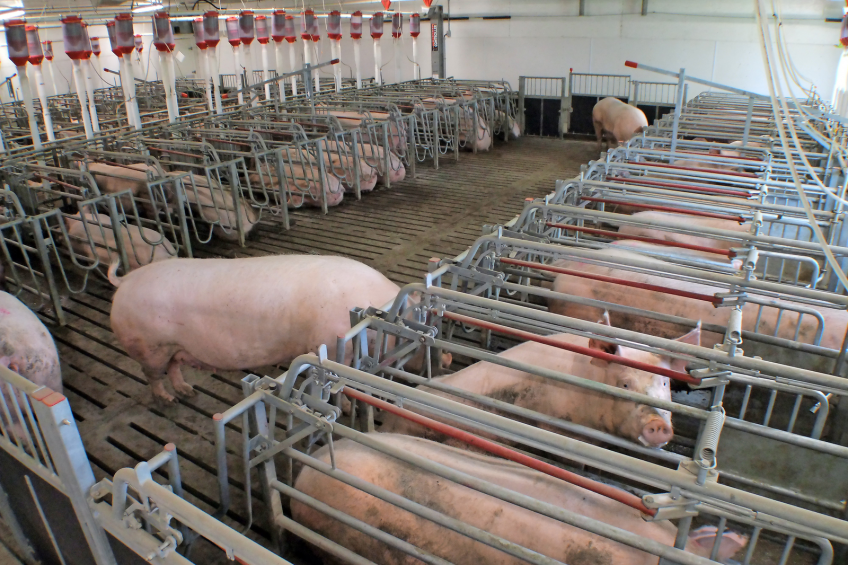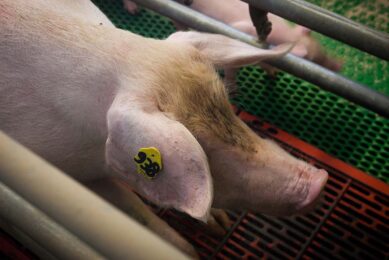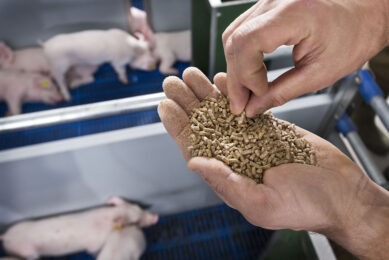Why heat up the barns for group housed sows?

Do sows need pre-heated barns? Well, maybe not so much. Sows in group housing systems will maintain room temperatures between 9 to 12°C, leading to about 78% reduction in energy consumption when compared to gestation rooms maintained at pre-set temperature of 16.5°C.
Conversion of gestation sow housing from stalls to group systems has been mandated in the recently revised Canadian Code of Practice for the Care and Handling of Pigs, with all sow farms expected to adopt this practice by July 2024 (NFACC, 2014). In order to take advantage of these legislative changes, the hog industry is looking for management options that will take advantage of potential merits of group sow housing, in order to ensure successful implementation group housing systems in all farms.
One such advantage of group housing systems is that sows can better interact with and control their immediate environment, including thermal conditions. Research results at Prairie Swine Centre in Canada indicate sows housed in groups have the freedom to exhibit thermoregulatory behaviour such as huddling to maintain comfort even when the temperature in the barn is lowered. Temperatures currently maintained in barns when sows are housed in stalls are based on the current published lower critical temperature (LCT). Allowing the temperature to drop below this LCT will require additional feed to maintain the sow body condition and weight gain over the gestation period.
Lower critical body temperatures
It has been widely thought that sows housed in groups may have LCT values significantly lower than 15°C when given the ability to utilise behaviour such as huddling. If group-housed sows can maintain body condition and weight gain at temperatures lower than currently maintained in sow barns without the need for additional feed, the potential exists to significantly reduce energy costs for heating and ventilation, reducing the overall cost of production. Currently, energy/utility costs rank third in total cost of production, closely behind feed and labour cost.
However, some issues anticipated with group-housed sows include the potential for higher activity levels and aggression among sows. These problems are heightened when sows are put on a restricted feeding regime, which is a common practice for gestating sows to maintain optimal body condition. The sensation of feeling ‘full’ is improved when high-fibre diets are fed; these diets are also known to reduce the urge to feed continuously, reducing the sow overall activity, and repetitive behaviours.
Figure 1 – Average air temperature measured at various locations in the sow-controlled room over 6 weeks of continuous monitoring.

Heat production in sows
Dietary fibre increases the heat production in sows without increasing digestible energy. As such, adding fibre to the diet can be a means of reducing activity and limiting aggression in sows under reduced barn temperature. The addition of fibre to the diet could be a means of addressing behavioural issues associated with grouped-sows as well as contributing to the energy balance of sows under reduced barn temperature.
Preferred temperatures for group-housed sows
What temperatures do group-housed sows prefer? This is one of the questions the study set out to answer.
The project consisted of two phases of experiments, both involving an ‘operant’ system.
The operant mechanism consisted of a manual control switch installed along the penning at a location which the sows can access and manipulate, and a radiant heater. When a sow activates the switch, it operates the existing supplementary heating system for the entire room, and the radiant heater placed above the area of the switch as an immediate feedback reward. In addition to the functioning heat control switch, a ‘dummy’ switch that does not operate the radiant heater (i.e., unrewarded activity) was also installed close to the real switch to distinguish between deliberate behaviour by the sows to control the room temperature and random interaction with the mechanism.
- The first phase utilised environmental chambers followed by tests in actual group-housed gestation rooms. Results from the first phase of the study indicated that throughout the trial a pattern was observed where temperature changes occur mainly during the day when sows are mostly active, as barn operations were carried out (between 7 am and 3 pm); beyond this period, lights in both chambers are turned off. Room temperatures at the time sows activated the operant mechanism was also recorded. Average temperature when the operant mechanism was activated was considerably lower at 12.5°C for the sows fed with high heat-increment (high fibre) diet. This suggests the sows could tolerate lower temperatures before calling for supplemental heat compared to sows fed with standard gestation diet.
In terms of performance, sows fed with standard gestation diet had an ADG of 0.16 kg/day on average over the trial period. While sows fed with high heat-increment diet were able to tolerate lower temperatures and performed slightly better with average ADG of 0.20 kg/day.
- The second phase of the project configured two barn rooms for group housing, with each room housing 28 gestating sows. One room was operated at a typical set-point temperature (16.5°C) while an operant mechanism was installed in the other room, allowing the sows to control the temperature. Similar to phase 1, temperature fluctuations occurred mainly during the day (7 am to 3 pm) when sows are mostly active and when the actual switch presses occurred. Preliminary results for phase 2 of the project have shown that sows could tolerate temperature lower than the typical 16.5°C set-point maintained in gestation barns with sows maintaining temperatures about 5 degrees lower than in a pre-set room, leading to about 78% reduction in energy consumption. At current energy prices, this 78% reduction in energy consumption would improve the producers’ profitability by more than $5.00/hog (€3.42) during the heating season.
Join 18,000+ subscribers
Subscribe to our newsletter to stay updated about all the need-to-know content in the pigsector, three times a week. Beheer
Beheer










 WP Admin
WP Admin  Bewerk bericht
Bewerk bericht